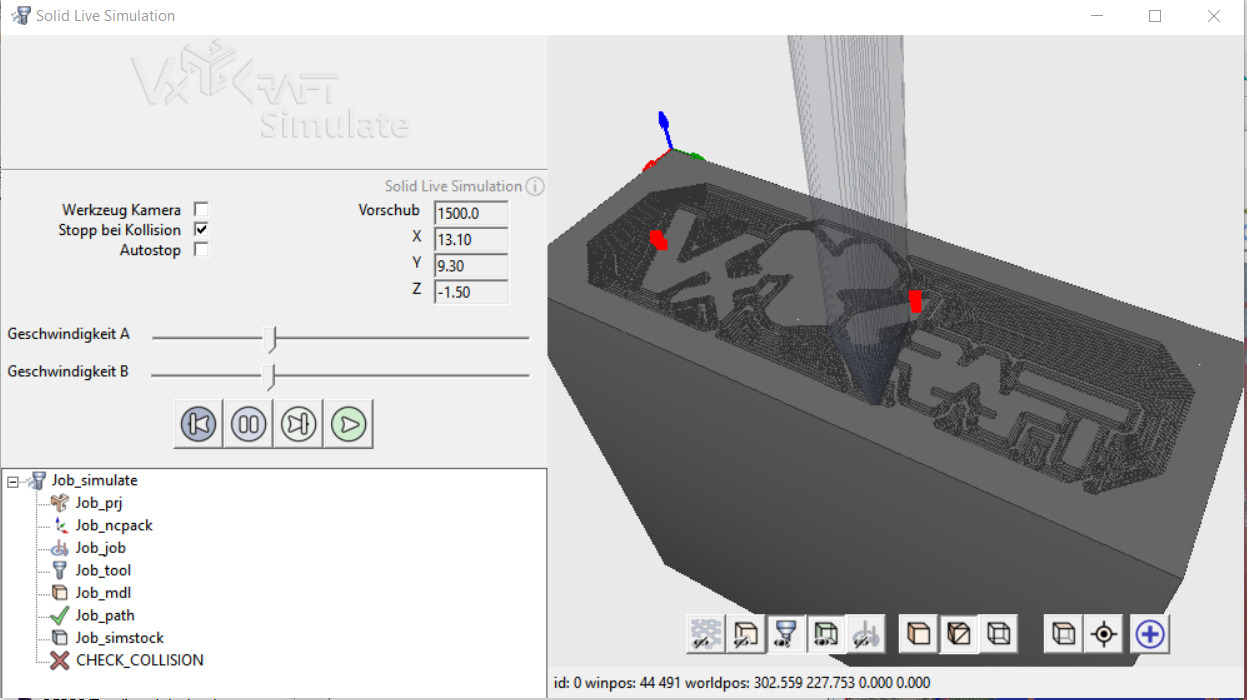Solid Live Simulation <PRO>
The calculated jobs can be visually checked using the virtual material removal simulation and analyzed for possible errors using the additional collision check.
 © vxcraft.com
© vxcraft.comA simulation can only be carried out if both a tool and a stock are available for the job to be simulated.
The Solid Live simulation environment supports starting with multiple jobs. In this case, the desired job to be simulated can be selected in the tree structure and activated. When opening the simulation environment, the first simulation element is automatically activated.
More than one simulation window can be opened. However, running multiple simulations at the same time is strongly discouraged, as this can lead to performance degradation and instability.
Simulation - collision check
In case of a collision, highlighted points are generated at the point of contact and the "CHECK_COLLISION" object is displayed. At the end of the simulation, a warning message is displayed if a collision was detected.
Simulation control
Tool camera
If the check box is activated, the camera follows the tool. The camera can still be rotated during the simulation, but it can no longer be moved.
Stop on collision
If the check box is activated, the simulation automatically stops at the collision point and issues a warning message.
Autostop
If the check box is activated, the simulation stops after each milling path section.
Feed rate
Displays the current feed rate.
Position
Displays the current position of the tool relative to the NC-Zero Point.
Speed A
Controls the simulation speed for rapid and plunge movements.
Speed B
Controls the simulation speed for the regular milling feedrate, excluding plunge movements.
Reset
Resets the activated simulation to the start.
Pause
Pauses the simulation.
Single step
Executes a single step. Useful for the analysis of critical areas.
Start
Starts the simulation.
Simulation tree
In this tree structure all elements for the simulation are listed.
The basic elements in the tree structure are the simulation elements. They contain all objects that are required for the execution of a simulation. They are independent of other simulation elements in the tree structure.
When a simulation element is activated, all associated objects are displayed and all other simulation elements are hidden. It is possible to show and hide any element manually (even from inactive simulation elements).
Simulation - Render View
The render view displays the material removal simulation. The control is identical to the render view of the main window.
